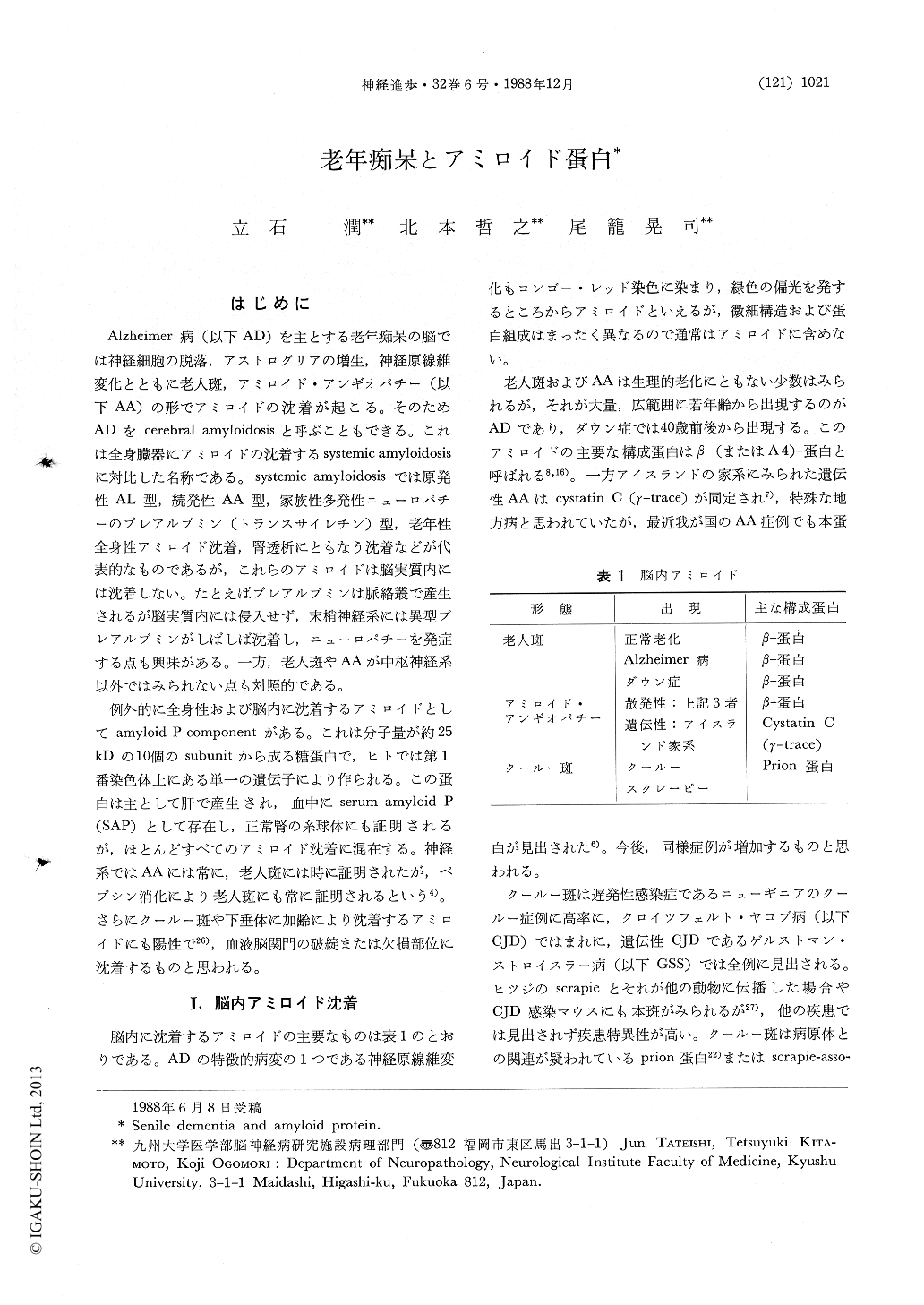Japanese
English
- 有料閲覧
- Abstract 文献概要
- 1ページ目 Look Inside
はじめに
Alzheimer病(以下AD)を主とする老年痴呆の脳では神経細胞の脱落,アストログリアの増生,神経原線維変化とともに老人斑,アミロイド・アンギオパチー(以下AA)の形でアミロイドの沈着が起こる。そのためADをcerebral amyloidosisと呼ぶこともできる。これは全身臓器にアミロイドの沈着するsystemic amyloidosisに対比した名称である。systemic amyloidosisでは原発性AL型,続発性AA型,家族性多発性ニューロパチーのプレアルブミン(トランスサイレチン)型,老年性全身性アミロイド沈着,腎透析にともなう沈着などが代表的なものであるが,これらのアミロイドは脳実質内には沈着しない。たとえばプレアルブミンは脈絡叢で産生されるが脳実質内には侵入せず,末梢神経系には異型プレアルブミンがしばしば沈着し,ニューロパチーを発症する点も興味がある。一方,老人斑やAAが中枢神経系以外ではみられない点も対照的である。
例外的に全身性および脳内に沈着するアミロイドとしてamyloid P componentがある。これは分子量が約25kDの10個のsubunitから成る糖蛋白で,ヒトでは第1番染色体上にある単一の遺伝子により作られる。
Senile dementia, especially Alzheimer's disease, is a cerebral amyloidosis, which is mainly consisted of β-protein. Two amyloid structures, amyloid angiopathy and senile plaques, are closely related in some brains, but not in others. EM study of amyloid angiopathy revealed that amyloid fibrils were produced by pericytes of capillaries and by smooth muscle cells of arterioles. In senile plaques, amyloid fibrils aggregated to form central cores and radiated around the cores. Immunostain using anti-β-protein anti-serum revealed various types of amyloid deposition around blood vessels with or without amyloid angio-pathy, in subependymal and subarachnoidal areas, and in columnar shape in the cerebellar cortex.
Morphologically, senile plaques resemble kuru plaques seen in Creutzfeldt-Jakob disease (CJD) and allied diseases, though the latter plaque consists of prion protein. Immunostain using antisera against both proteins can clearly identify each plaque and increase the incidence of the plaques. All of CJD patients with clinical duration of over one year shows kuru plaques and aged patients with CJD show both plaques independently.

Copyright © 1988, Igaku-Shoin Ltd. All rights reserved.


